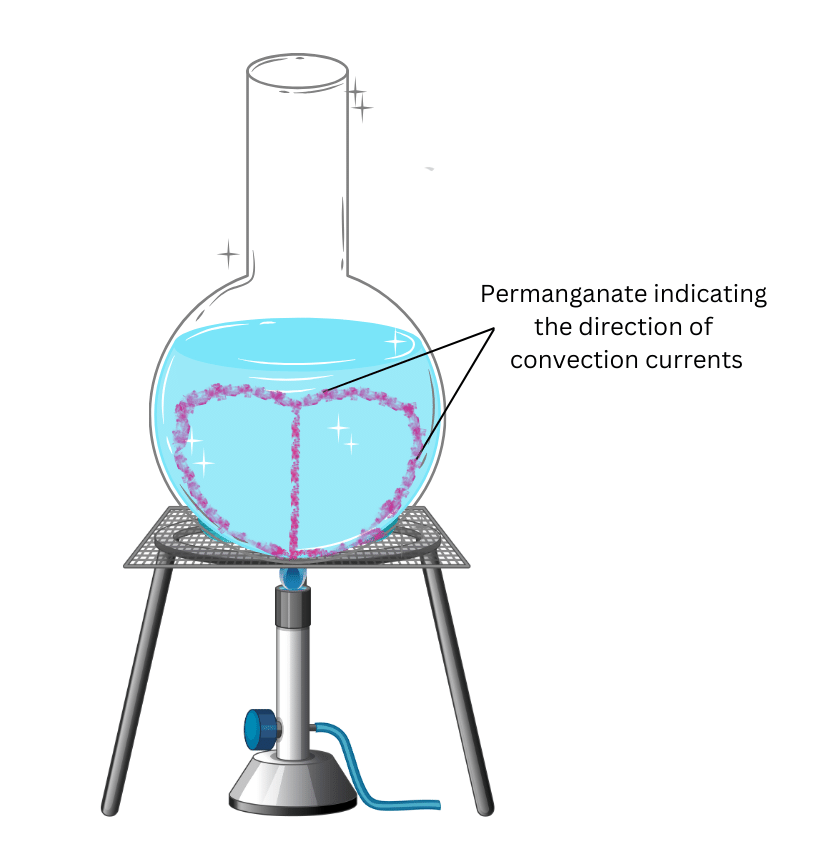8. Complete Activity 3.8 (Page 30). Take a round bottom flask (if flask is not available, a beaker can be used). Fill it two-thirds with water. Place it on a tripod, or make some arrangement to place the flask in such a way that you can heat it by placing a candle below it. Wait till the water in the flask is still. Place a crystal of potassium permanganate at the bottom of the flask gently using a straw. Now, heat the water by placing the candle just below the crystal. Write your observation in your notebook and also draw a picture of what you observe.
Answer: Let us carry out the activity in the following way:
Aim: To observe what happens when the flask is heated and give an explanation.
Materials Required: Round-bottomed flask, water, tripod stand, Bunsen burner, potassium permanganate crystal, straw.
Procedure:
(i) Fill two-thirds of the round-bottomed flask with water and place it on a tripod.
(ii) Wait until the water in the flask settles and becomes still.
(iii) Using a straw place the potassium permanganate crystal at the bottom of the flask.
(iv) Heat the water by placing a Bunsen burner just below the crystal and observe what happens.
Observation:
You will see the purple colour of the crystal continuously rising up through the centre of the flask and coming down from the sides, forming a circular current – as shown in the picture above. This will continue for some time.

Conclusions:
When the Bunsen burner is turned on, the heat from the flame travels to the water by conduction. When the water gets heated, the hot water near the flame rises up and carries the permanganate upwards. The cold water moves down from the sides to take its place and the permanganate comes down with it. The purple permanganate acts as a tracer and visually shows us how heat transfer takes place in water. Therefore, we conclude that water gets heated by this process known as convection, which continues until the entire water gets heated.
“Complete Activity 3.8 (Page 30). Take a round bottom flask (if flask is not available, a beaker can be used). Fill it two-thirds with water. Place it on a tripod, or make some arrangement to place the flask in such a way that you can heat it by placing a candle below it. Wait till the water in the flask is still. Place a crystal of potassium permanganate at the bottom of the flask gently using a straw. Now, heat the water by placing the candle just below the crystal. Write your observation in your notebook and also draw a picture of what you observe.” – Solved.
Related Links:
Solution to Extended Learning Problem 1
Solution to Extended Learning Problem 2
Solution to Extended Learning Problem 3
Solution to Extended Learning Problem 4
Solution to Extended Learning Problem 5
Solution to Activity 3.1
Solution to Activity 3.2
Solution to Activity 3.3
Solution to Activity 3.4
Solution to Activity 3.5
Solution to Activity 3.6
Solution to Activity 3.7
Solution to Activity 3.9
Solution to Activity 3.10
Solution to Activity 3.11
Solutions to Chapter 3 Heat


